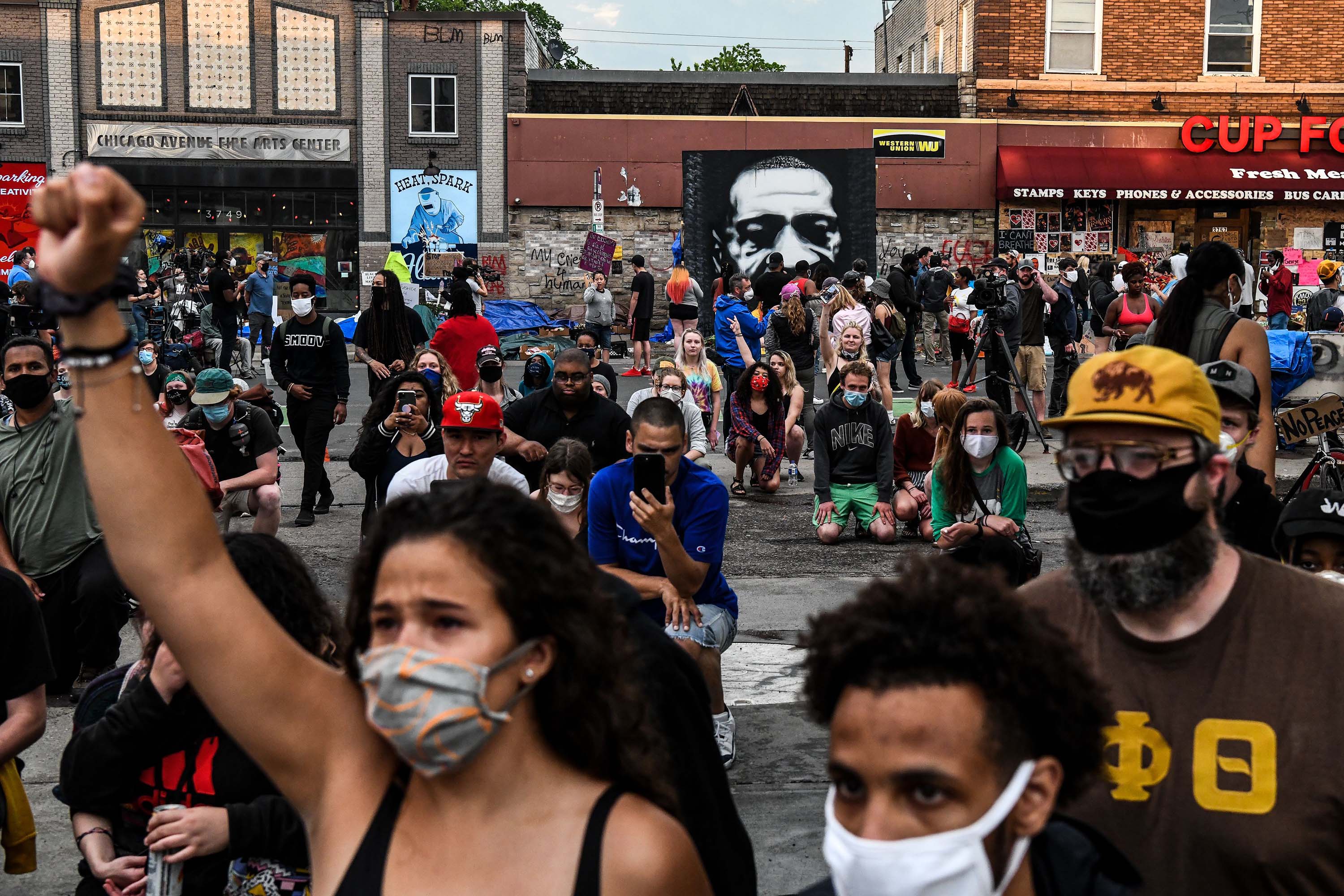
5 facts you need to know
- It's the eighth day of protests across the US over the death of George Floyd, an unarmed black man, at the hands of Minneapolis police.
- One former officer was charged with third-degree murder and manslaughter — but protesters argue it's not enough, and other officers involved should also be charged.
- President Trump vowed yesterday to deploy the military if widespread violence isn't quelled.
- Nearly half of the US has activated the National Guard.
- Despite major cities around the country enacting curfews, including New York and Washington, DC, protesters are still taking to the streets and facing arrest.
Experts hired by George Floyd's family and the Hennepin County Medical Examiner have concluded his death was a homicide.
Tuesday was the eighth consecutive day of protests across the United States over the death of George Floyd.
On a national level, it was comparatively calmer than the violent clashes seen over the weekend and Monday. But despite the broadly peaceful nature of the protests, a number of violent confrontations between police and protesters occurred in several major cities.
Here are some of the biggest developments overnight:
Military troops: The Pentagon confirmed that about 1,600 active duty troops had been moved from Fort Bragg and Fort Drum to the Washington, DC area to assist civil authorities if needed. A spokesperson said it was just a "prudent planning measure" and no active duty forces have been deployed in DC yet.
National Guard helicopter: The National Guard in Washington, DC, said it was investigating the actions of at least one military helicopter Monday night, which was seen doing low-level passes over crowds of protesters.
Washington, DC: Protests had been largely peaceful all day, but the night ended with a violent confrontation. Protesters threw fireworks and projectiles at police from the other side of a fence, and police responded with pepper spray.
New York protests: There were still some instances of looting on Tuesday, but nowhere near the widespread level seen on Monday night. There was a scuffle in Chelsea, where some protesters were arrested and detained. A large group of protesters tried to cross the Manhattan Bridge from Brooklyn into Manhattan, but were stopped by police; after a tense standoff, protesters were allowed to leave the bridge and go back to Brooklyn.
Los Angeles: A crowd of protesters stayed outside the mayor's residence, even hours after curfew kicked in. Police eventually arrived to arrest protesters and bus them away for further processing, but the entire event was peaceful and calm, without much conflict between the two groups. The LAPD said it arrested "hundreds" of protesters.
Seattle unrest: Hundreds of protesters in Seattle stood in front of a police cordon Tuesday night, with dozens near the front holding umbrellas to shield themselves from crowd control chemicals such as pepper spray. Earlier that night, the mayor extended the evening curfew through June 6.

No comments:
Post a Comment